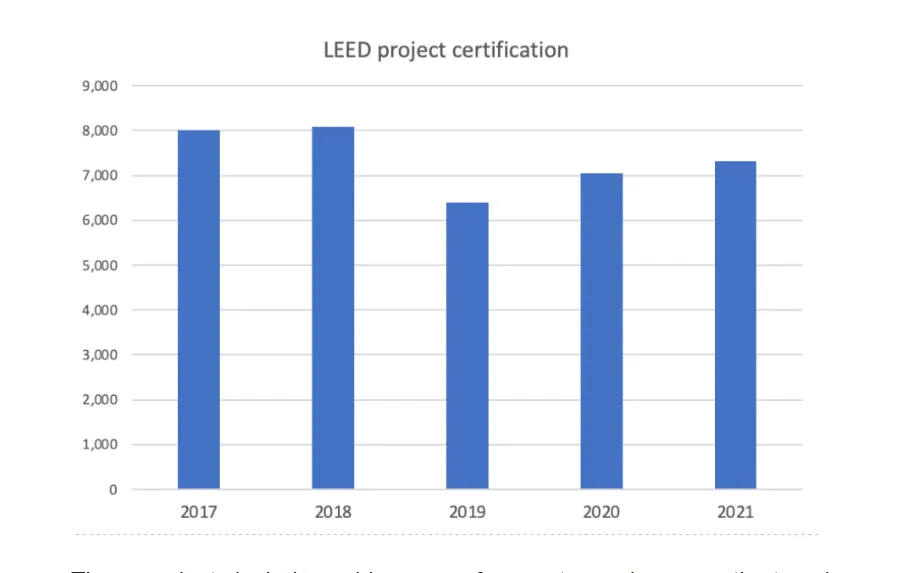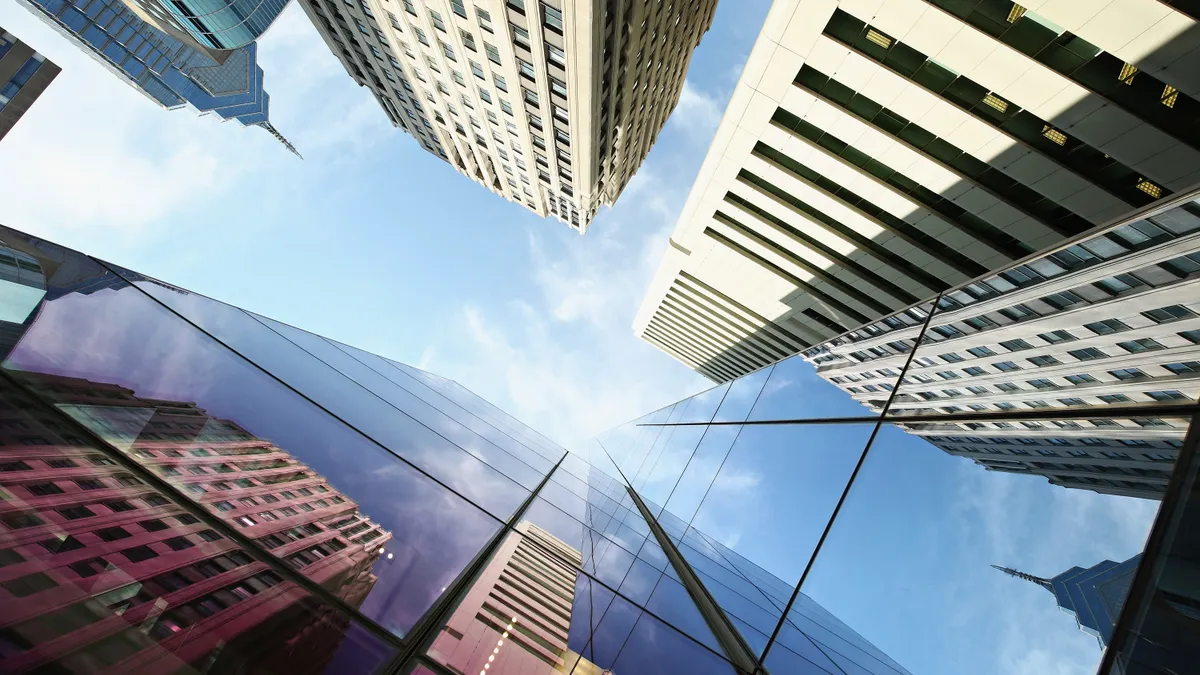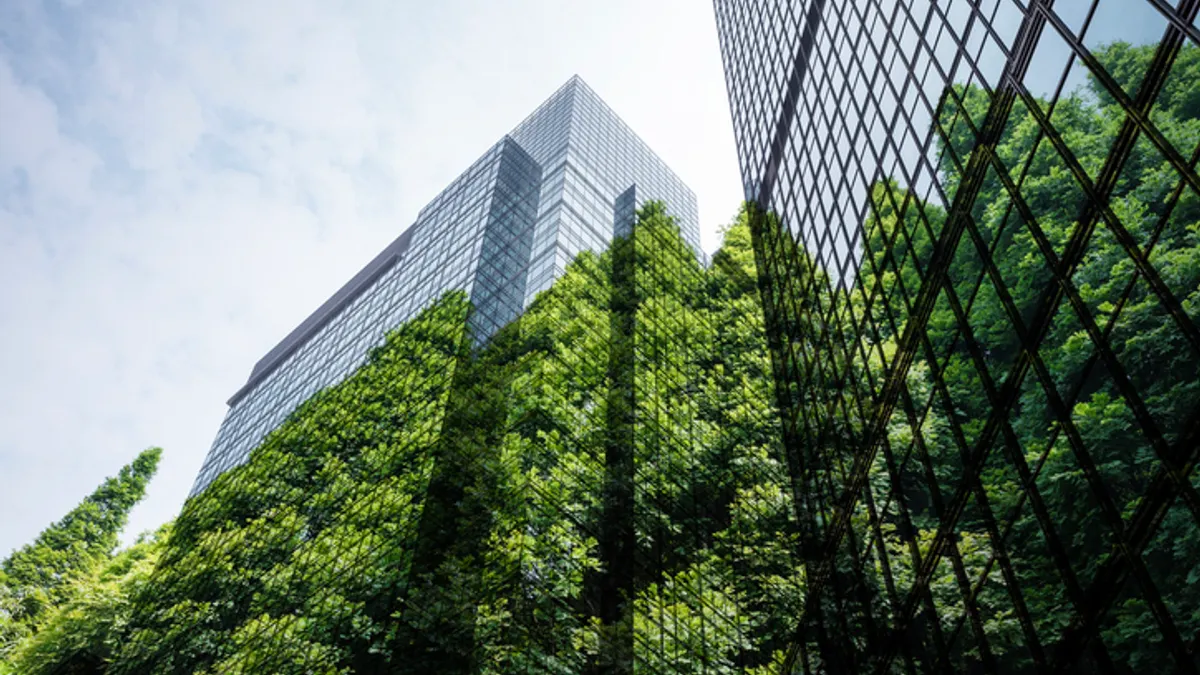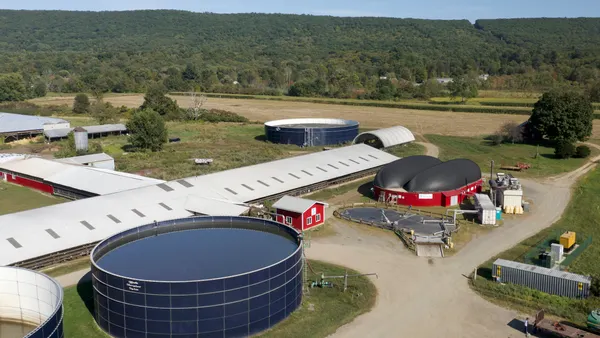Dive Brief:
- The U.S. Green Building Council is seeking votes on an update to LEED v4 through a ballot process open through August 10.
- This update “aligns the LEED v4 requirements with the rigor of LEED v4.1 and sets the stage for future versions of the rating system,” adding a new greenhouse gas emission metric aimed at raising the threshold for energy performance, Selina Holmes, LEED vice president wrote on the USGBC website.
- USGBC is developing LEED v5, with a draft of the Existing Buildings rating system slated for release at the Greenbuild 2023 summit in September and a Building Design and Construction, or BD+C, rating system draft due in December, according to slides shared during a LEED government briefing attended by Facilities Dive Tuesday.
Dive Insight:
The LEED v4 energy update, proposed in November 2022, applies to LEED for BD+C as well as Interior Design and Construction, or ID+C, which includes multifamily units. This update seeks to define a current standard of leadership in rating systems by aligning with LEED v4.1 targets.
The ballot for the LEED v4 update covers prerequisite Minimum Energy Performance and Credit Optimize Energy Performance for four rating systems, including BD+C and ID+C, in the Energy and Atmosphere category. After receiving approval through the ballot process, the proposed update will be finalized and released on Jan. 1, 2024. Any LEED v4 projects that register prior to that date will be exempt from the newly introduced requirements outlined in the ballot.
Melissa Baker, senior vice president at USGBC, noted that its committees started developing LEED v5 in January. During the LEED briefing, Baker said USGBC will draw on the Future of LEED principles, published last June, to evolve a version that can leverage ESG reporting frameworks, performance standards and local regulations to provide streamlined tools and pathways for buildings, portfolios, cities and communities.
Updates to LEED will address the ongoing push for decarbonization through electrification, fossil fuel elimination, and on-site and off-site renewables investments to prepare buildings for carbon neutrality. Other areas of focus will include guidelines for effectively implementing stormwater systems, optimizing water use in buildings, using regenerative design to boost building resilience through biodiversity and green infrastructure, improving indoor air quality in buildings, prioritizing the needs of building occupants and surrounding communities, and creating a more adaptive built environment that can withstand and recover from natural hazards and the uncertainties of a changing climate.
“Right now, we’re working on existing and new construction of commercial buildings. Going into 2024, we’ll make updates to our residential and community rating systems,” Baker said during the LEED v5 briefing.
“Complex energy modeling is not required to achieve maximum points under LEED v5. Instead, projects may opt for a streamlined system by system approach that doesn’t require that complex modeling,” Gail Hampsmire, principal engineer at Green Business Certification Inc., said during the briefing.
Nearly 37,000 projects, spanning 4.63 billion gross square feet of space, obtained LEED certification from January 2017 through December 2021. During the first three quarters of 2022, more than 5,000 of the 8,000 additional projects registered for LEED became certified. USGBC says that LEED buildings have higher resale value and lower operating costs than non-LEED buildings.

“The vision for LEED v5 is to support and promote embodied carbon,” Wes Sullens, director of LEED, said during the briefing. Sullens also mentioned the possibility of adopting a prescriptive approach intended to reduce waste and embodied carbon of structures, enclosures and finished materials. “We’ll also have a Performance Path that will ratchet up to the next level [from what it was before],” he said.
The prescriptive compliance path mandates specific standards for individual building components, while the performance approach lays emphasis on achieving a certain standard for the entire building, such as minimizing energy consumption.










